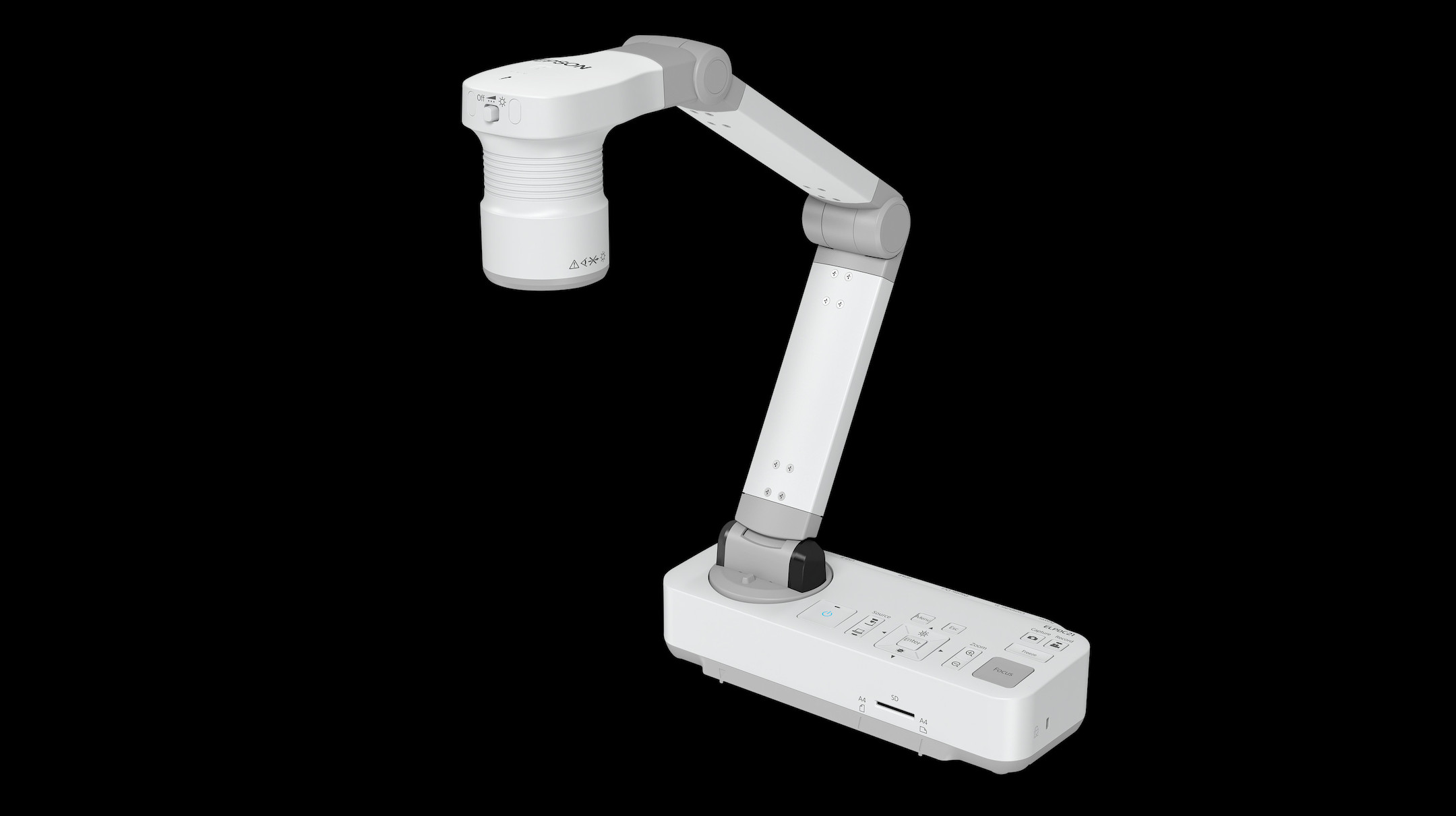























£596.95*
- Resolution 1920 x 1080 Full HD
- Camera resolution 8 MP
- Optical Zoom 12
- Focus type Manual & automatic focus


Product information
Experience the following highlights:
- Autofocus "One-Touch"
- 1080p support with VGA, HDMI and USB output
- Supports parallel video output
- SD card slot for video and image recording
- Supports split screen function from SD card: Images, videos and live camera recordings
- Microscope adapter included
Finest details clearly recognisable
This document camera is ideal when lossless magnification is required - e.g. when working with historical texts. E.g. when working with historical texts. Thanks to a 12x optical zoom, a 10x digital zoom and the integrated LED light, even the finest details are visible. In science lessons, even tiny objects can be displayed in large format thanks to the microscope connection option.
Display in Full HD
Show images and 3D objects in Full HD with incredible detail to the whole class. Two complete pages from a textbook can be projected at once with the large A3 recording area. At 30 frames per second, video streaming is smooth, with impressive image quality and no motion blur.
More flexibility
Live images and video content, including content stored on an SD card, can be displayed simultaneously on multiple projection surfaces via parallel video output. With the split screen function, teachers can project two different contents next to each other and thus emphasise and compare certain teaching areas, e.g. the growth of plants or animals. The document camera is controlled via the displayed image at the front of the classroom, so that the teacher can always focus their full attention on the students. Video recordings can also be started and stopped in this way.
Mobile and lightweight
Thanks to its lightweight and mobile design and the textile transport bag included in the scope of delivery, the camera can be easily taken from one classroom to another. Kensington anti-theft protection and a security lock provide security for schools and other educational institutions when the camera is unattended or not in use.
Technical data
| Name | Epson ELPDC21 document camera |
|---|---|
| Article number | 1161135 |
| GTIN/EAN | 8715946610122 |
| Manufacturer SKU | V12H758040 |
| Model name | ELPDC21 |
| Brand | Epson |
| Product Type | Visualizer |
| Resolution | 1920 x 1080 Full HD |
| Frames per Second | 30 fps |
| Focus type | Manual & automatic focus |
| Digital Zoom | 10 |
| Optical Zoom | 12 |
| Camera resolution | 8 MP |
| Camera sensor | 1/ 2,7 " CMOS-Sensor |
| Inputs | 1x USB-B , 1x VGA |
| Outputs | 1x HDMI |
| Product width | 27 cm |
| Product height | 44.7 cm |
| Product depth | 31.7 cm |
| Weight | 2.6 kg |
| Colour | White |
| Delivery contents | Bag , Batteries , HDMI Cable , Power cable , Quick user guide , Remote control , USB cable |
| Condition | New |
| Warranty | 36 Month |
| Warranty type | Bringin service Service and support information |
Product safety
| Person responsible for the EU |
|---|
| Epson Deutschland GmbH |
| Schiessstraße 49 |
| 40549 Düsseldorf |
| Germany |
| kontakt_de@epson.de |



